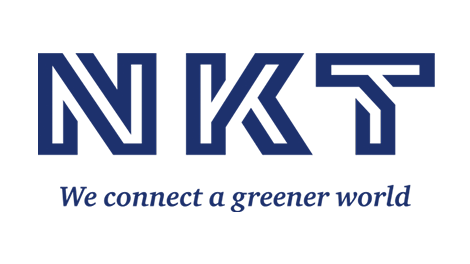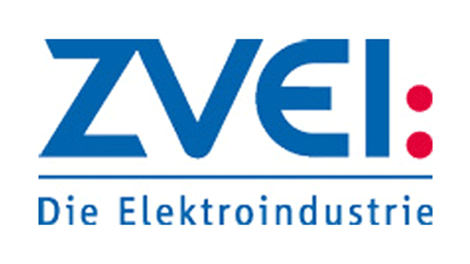Prysmian – PRYSOLAR, the Group’s new PV cable solution
What is PRYSOLAR, Prysmian Group’s innovative PV cable solution presented at Genera 2023?
On the occasion of Genera 2023 – the International Energy and Environmental Fair held in Madrid last February – Prysmian Group has launched Prysmian PRYSOLAR, the most innovative cable solution for solar power generation.
But what are solar cables, why are they so relevant and, most importantly, what is Prysmian PRYSOLAR?
What are solar cables and why are they important
Solar cables, also known as solar photovoltaic cables or solar PV cables, are specifically designed cables used in photovoltaic systems, in which they play a critical role: solar cables are used to transmit the electrical power generated by solar panels and serve as a conduit where the electricity travels, connecting the components of the whole circuit and ensuring the efficient and safe flow of power and hence the effective functioning of solar power installations.
Solar cables are thus crucial to provide a safe and reliable performance of any photovoltaic system, since their failure disrupts power generation.
What is Prysmian PRYSOLAR?
As stated above, solar PV cables play a key role in power generation. Nevertheless, extreme climate events like heavy rains and floods may cause cable deterioration and failure with negative consequences on power generation capacity, reliability of power supplies and return on investment.
To face and overcome these challenges, Prysmian Group has launched PRYSOLAR cables, the most innovative PV cable solution, fully compliant with the applicable global standards EN 50618 and IEC 62930 and enhanced with long term resistance in water up to 1800 V DC. Thanks to an innovative and first-in-the-industry test protocol that certifies long term resistance in water for DC cables, in fact, Prysmian PRYSOLAR offers extreme climate strength and +30-years lifetime.
The characteristics of Prysmian PRYSOLAR
Given the important role solar photovoltaics play in the fight against climate change (since they are crucial to achieve carbon neutrality targets), and given that global photovoltaic capacity is set to increase to 19000 GW and cover more than 50% of global electricity demand by 2050, it is essential to provide PV systems with innovative solutions in order to face the most unpredictable challenges and events that could affect the areas where solar panels are installed.
And that’s exactly what Prysmian PRYSOLAR is designed for. Thanks to its characteristics, this innovative solution provides:
- Extreme climate strength
- Reliable return on investment (+30 years of lifetime)
- Increased operational efficiency of assets
- Sustainable supply chain
“Solar photovoltaic generation is set to cover more than 50% of the global electricity demand by 2050. Return on investment, asset efficiency, OPEX and Levelized Cost of Energy are the main and most critical priorities for our customers in the solar industry. Prysmian PRYSOLAR, is the new generation of cables designed to provide our solar customers with peace of mind in these areas.”
Vanessa Alvarez, SVP Industrial Specialties, Prysmian Group

Source
Prysmian Group
EMR Analysis
More information on Prysmian: See the full profile on EMR Executive Services
More information on Valerio Battista (Group Chief Executive Officer, Prysmian Group until the 2024 Annual General Meeting (April)): See the full profile on EMR Executive Services
More information on Massimo Battaini (Group Chief Operating Officer and Executive Director, Prysmian Group + Proposed Candidate as CEO at the 2024 Annual General Meeting (April)): See the full profile on EMR Executive Services
More information on Srinivas Siripurapu (Chief Innovation and R&D Officer, Prysmian): See the full profile on EMR Executive Services
More information on Vanessa Alvarez (SVP Industrial Specialties, Prysmian Group): See the full profile on EMR Executive Services
More information on Prysmian Prysolar: https://www.prysmiangroup.com/en/markets/industries/renewables/solar/prysmian-prysolar + The PV or solar cables are part of the Balance of System (BOS) in a PV installation and represent only 1-2% of the total installation cost. Nevertheless, they are critical system components, and their failure disrupts power generation. Utility-scale solar farms are growing in size and operating voltage, and the geographical areas where they are installed are more and more subject to extraordinary climate events: extreme and unpredictable. Extreme climate events like heavy rains and floods may cause cable deterioration and failure with negative consequences on power generation capacity, reliability of power supplies and return on investment.
More information on Genera 2023 (21-23 February, 2023 | Madrid, Spain): https://www.ifema.es/en/genera + Genera is the International Energy and Environment Fair, which will hold its next edition from 21 to 23 February 2023 at IFEMA MADRID, an event aligned with the United Nations Sustainable Development Goals and the current challenges of the sector, with sustainability, innovation and business as strategic axes.
GENERA’s offer is aimed at a broad group of professionals in consultancy, engineering, construction, commerce; Industrial energy users; Equipment manufacturers and distributors; Installers and maintenance companies; Energy project promoters; Universities and research centres; Prescribers and real estate developers; Public administrations and, in general, all professionals related to the world of energy efficiency and renewable energies in the commitment to climate neutrality.
More information on International Electrotechnical Commission (IEC): https://www.iec.ch/homepage + The IEC is a global, not-for-profit membership organization, whose work underpins quality infrastructure and international trade in electrical and electronic goods. Our work facilitates technical innovation, affordable infrastructure development, efficient and sustainable energy access, smart urbanization and transportation systems, climate change mitigation, and increases the safety of people and the environment.
The IEC brings together more than 170 countries and provides a global, neutral and independent standardization platform to 20 000 experts globally. It administers 4 Conformity assessment systems whose members certify that devices, systems, installations, services and people work as required.
The IEC publishes around 10 000 IEC International Standards which together with conformity assessment provide the technical framework that allows governments to build national quality infrastructure and companies of all sizes to buy and sell consistently safe and reliable products in most countries of the world. IEC International Standards serve as the basis for risk and quality management and are used in testing and certification to verify that manufacturer promises are kept.
IEC work directly underpins the targets of all 17 UN Sustainable Development Goals.
More information on Yinbiao Shu (President, International Electrotechnical Commission (IEC)): https://www.iec.ch/basecamp/yinbiao-shu
More information on EN Standards: https://www.en-standard.eu/ + European Standards is an expression of requirements for products, processes or services to meet the requirement of fitness for a particular purpose.
EN Standards have got a positive impact on facilitating the free movement of goods in international trade, seeking to rationalize production, helps to promote environmental protection and competitiveness, ensuring adequate consumer protection in the Internal Market.
Currently, EN qualified technical recommendations are not binding and their use is voluntary.
EN standard, such as publicly available documents, is accessible at all stages of formation and use in practice.
These European Standards, unlike legislation, which may occur without consultation and consent of all the concerned documents, when addressing fundamental questions agreed upon by all stakeholders.
EMR Additional Notes:
- EN 50618:
- https://standards.iteh.ai/catalog/standards/clc/00edeb15-bf19-4a72-8ed0-e7a26b25925c/en-50618-2014
- This European Standard applies to low smoke halogen-free, flexible, single-core power cables with cross-linked insulation and sheath. In particular for use at the direct current (d.c.) side of photovoltaic systems, with a nominal d.c. voltage of 1,5 kV between conductors and between conductor and earth. The cables are suitable to be used with Class II equipment. The cables are designed to operate at a normal maximum conductor temperature of 90 °C, but for a maximum of 20 000 hours a max. conductor temperature of 120 °C at a max. ambient temperature of 90 °C is permitted. NOTE The expected period of use under normal usage conditions as specified in this standard is at least 25 years.
- AC (Alternating Current) & DC (Direct Current) & UC (Universal Current):
- Direct current (DC) is an electric current that is uni-directional, so the flow of charge is always in the same direction. As opposed to alternating current, the direction and amperage of direct currents do not change. It is used in many household electronics and in all devices that use batteries.
- Direct current has many uses, from the charging of batteries to large power supplies for electronic systems, motors, and more. Very large quantities of electrical energy provided via direct-current are used in smelting of aluminum and other electrochemical processes.
- in contrast to AC power, DC power is entirely made up of active power, meaning that there are almost no losses due to the capacitance of wires when DC power travels long distances. In fact, high voltage AC transmission systems have losses of 7% to 15% with aboveground transmission.
- Alternating Current is used in homes as Direct current can not be easily stepped up or stepped down with the help of transformers whereas alternating current can easily be converted from low voltage to high voltage or vice-versa with the help of transformers.
- “UC” is used for “Universal Current”, that translates to “either DC or AC”. So a 24 V UC input can accept either 24 V AC or 24 V DC.
- CapEx vs. OpEx:
- Capital expenditures are a company’s major, long-term expenses while operating expenses are a company’s day-to-day expenses. Examples of CapEx include physical assets, such as buildings, equipment, machinery, and vehicles. Examples of OpEx include employee salaries, rent, utilities, and property taxes.

- LCOE:
- The levelized cost of energy (LCOE), also referred to as the levelized cost of electricity or the levelized energy cost (LEC), is a measurement used to assess and compare alternative methods of energy production.
- The formula to calculate the LCOE is (Present Value of Total Cost Over the Lifetime)/(Present Value of All Electricity Generated Over the Lifetime).
- LCOE is the metric selected to represent typical electricity generation cost elements in a common framework including project finance (FCR), capital expenditures (CAPEX), fixed and variable operations and maintenance costs (FOM and VOM), and annual-energy-production-per-kilowatt plant capacity based on capacity factor, …
- Lower LCOE is better. The project could be profitable if the LCOE is lower than the maximum power price the plant can get. On the other hand, the project will probably not be economical if the LCOE is higher than the cost of power.





